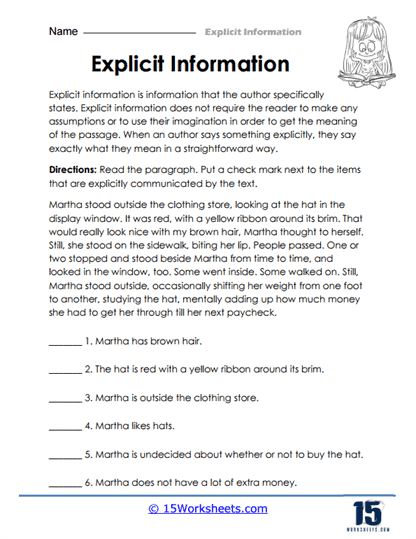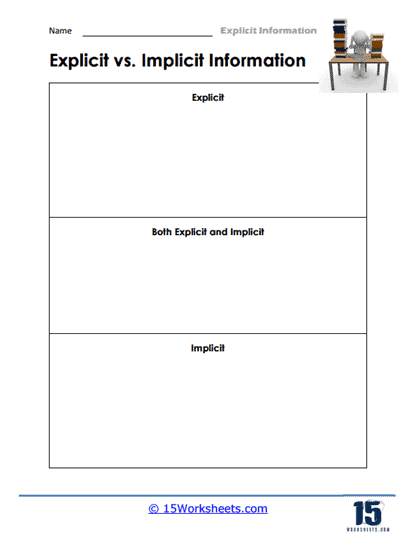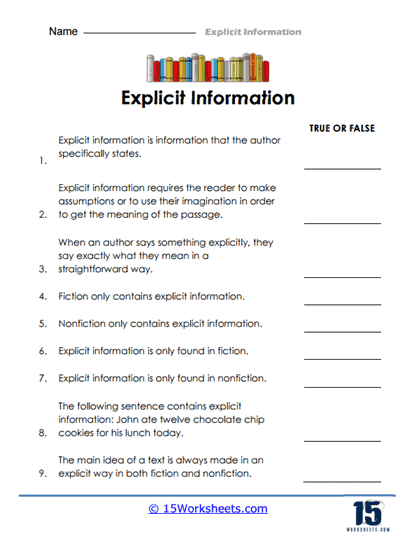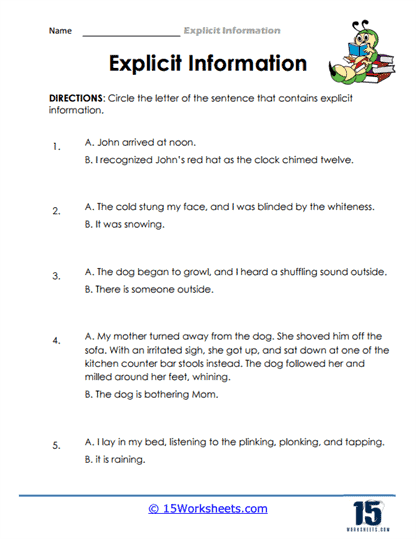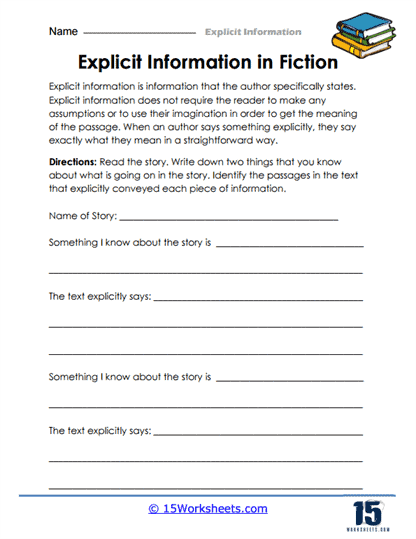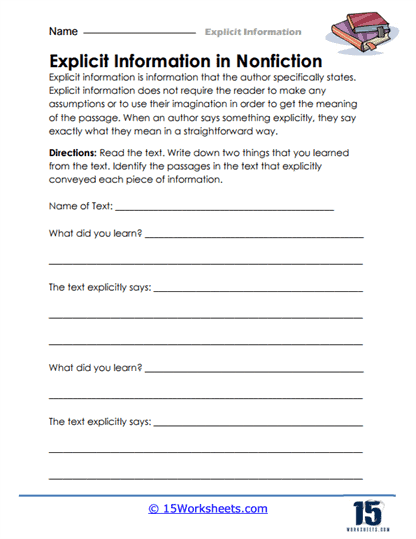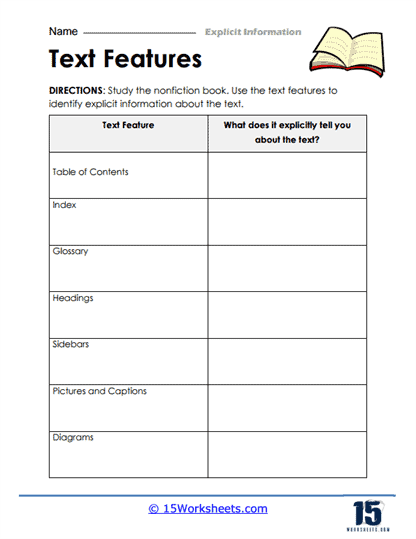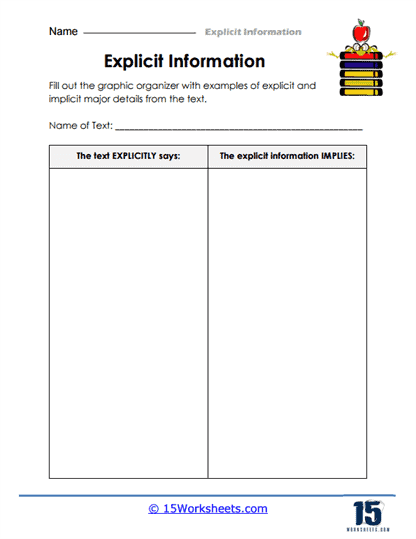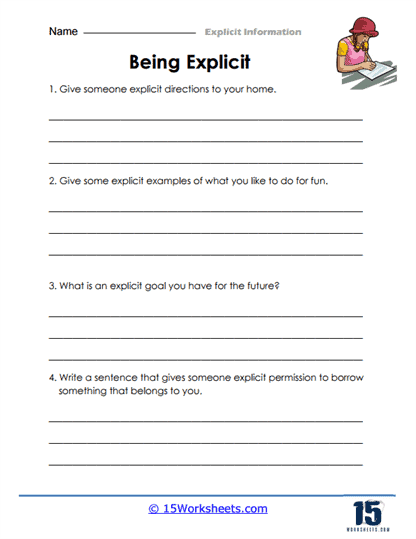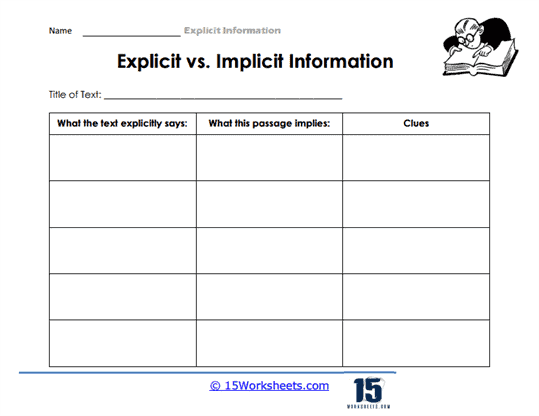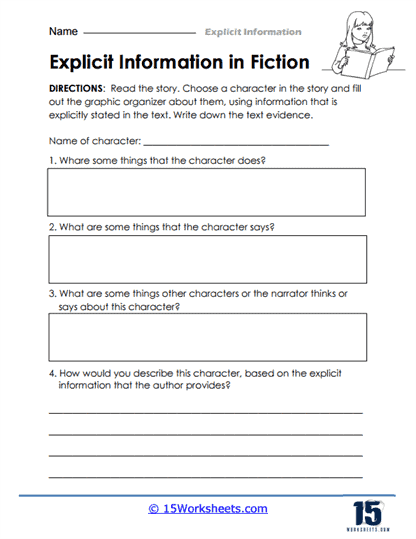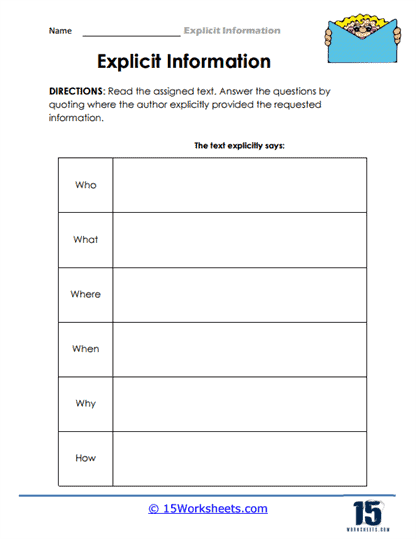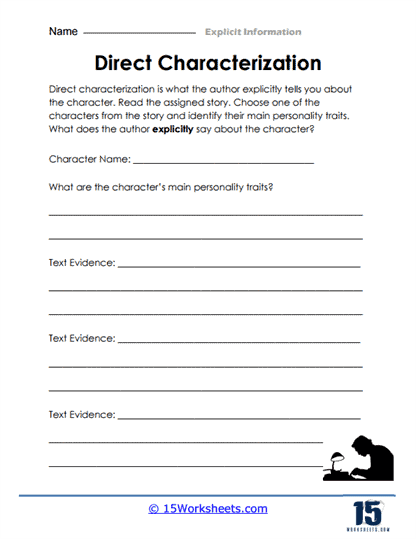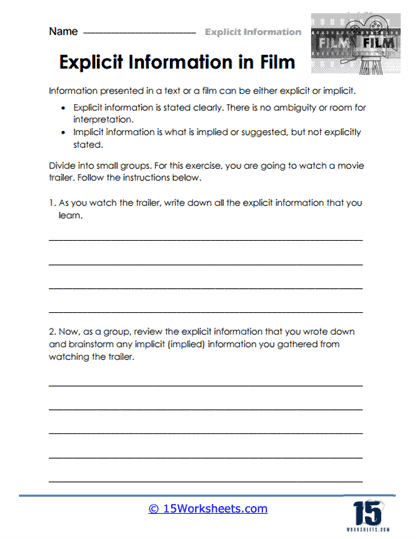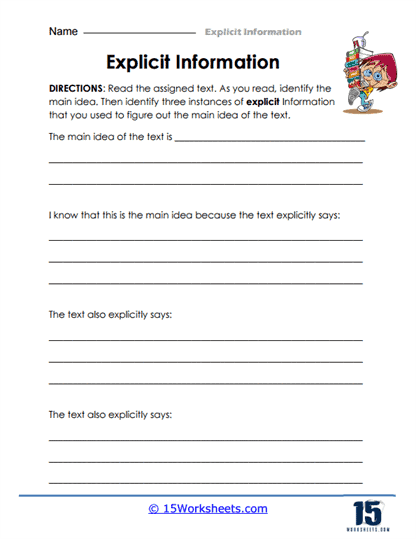Explicit Information Worksheets
All About These 15 Worksheets
In the vast ocean of information, the ability to discern, interpret, and utilize explicit information is a compass that guides students through their academic journey and beyond.
This collection of 15 worksheets centered on explicit information serves as a beacon, illuminating the critical skills required to extract concrete details from various sources.
With these meticulously crafted worksheets, students embark on a voyage of discovery, sharpening their analytical prowess and harnessing the power of explicit information to unravel the mysteries of diverse subjects.
What is Explicit Information?
Explicit information refers to facts, details, or statements that are directly and clearly stated or presented in a text, speech, or other forms of communication. This type of information is easy to identify and understand, as it does not require the audience to infer, interpret, or deduce any hidden meanings or implications.
Explicit information is particularly important in various forms of communication, such as instructional manuals, news articles, or academic texts, where clarity and precision are essential to convey accurate and unambiguous information. In these contexts, explicit information helps to ensure that the intended message is easily comprehensible and free from any potential misinterpretations.
In contrast to explicit information, implicit information is not directly stated and requires the reader or listener to make inferences or deductions based on context, background knowledge, or other indirect clues. Understanding implicit information often relies on critical thinking, analysis, and interpretation skills.
Explicit information plays a crucial role in various forms of communication and serves several important functions:
Clarity and precision: Explicit information ensures that the intended message is clear and precise, reducing the chances of misinterpretation or confusion. This is particularly important in contexts where accuracy and unambiguous understanding are crucial, such as in legal documents, scientific research, or instructional materials.
Accessibility: By directly stating facts, details, or statements, explicit information makes the content more accessible and easier to comprehend for a wider range of audiences, regardless of their background knowledge or familiarity with the subject matter.
Efficient communication: Explicit information enables efficient communication, as it minimizes the need for readers or listeners to spend time and effort deducing meaning from indirect clues or context. This can be particularly valuable in time-sensitive situations or when conveying complex or technical information.
Establishing facts and evidence: Explicit information allows authors or speakers to clearly present facts, evidence, or data that support their arguments or conclusions. This helps to establish credibility, build trust, and create a solid foundation for further discussion or analysis.
Simplifying complex concepts: Presenting explicit information can help break down complex concepts or ideas into clear, manageable pieces, making them easier for readers or listeners to understand and process.
Ensuring consistency: In collaborative or multi-authored works, using explicit information can help ensure consistency in the presentation and understanding of key concepts, ideas, or terminology, thus minimizing potential discrepancies or misunderstandings.
Overall, explicit information plays a vital role in facilitating clear, accurate, and efficient communication across a wide range of contexts and disciplines, ensuring that information is easily accessible and comprehensible for diverse audiences.

